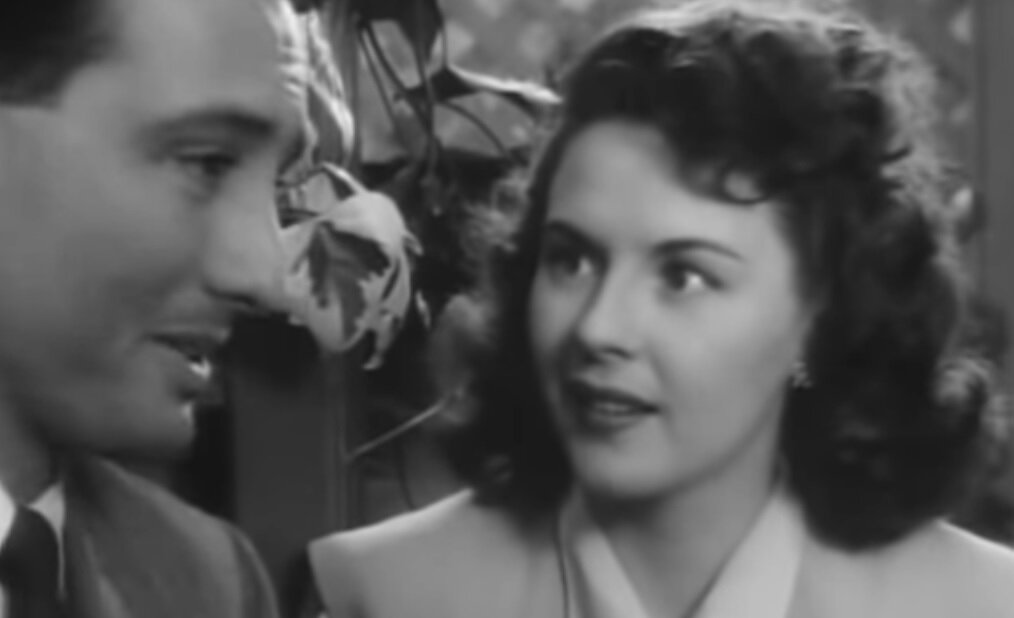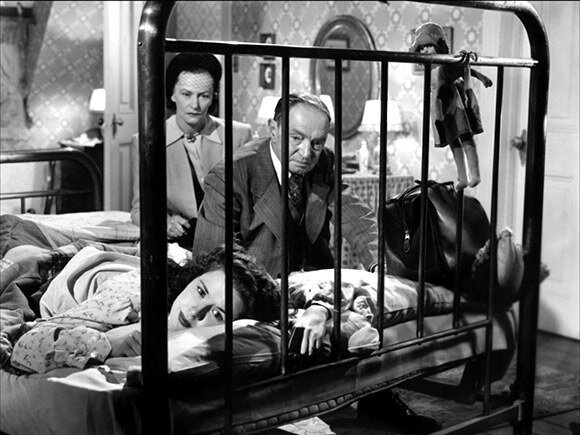By Andrea Thompson
Since the last two films in this column have been all about the new kids on the block, this week’s column features a throwback, a movie that’s every bit as lean and mean as its intro promises.
No, Ida Lupino’s slim, 70 minute 1953 thriller “The Hitch-Hiker” isn’t technically horror, but rather a noir. It takes place south of the border, and while we don’t travel the world and see its wonders, the cruelty of men, or more accurately, one man, is on full display, and that’s plenty.
The movie was inspired by the real life story of Billy Cook’s murder spree, which Lupino apparently had to soften to satisfy censors. But her introduction of the sociopathic Emmett Myers (William Talman) is nonetheless weighted with menace, with Myers coming off as demented as any slasher villain.
Like many of the best monsters, “The Hitch-Hiker” shrouds its killer with an air of mystery, only showing the lower portion of Myers’s body as he unrepentantly shoots those who have the bad fortune to offer him a ride before Roy Collins (Edmond O'Brien) and Gilbert Bowen (Frank Lovejoy) unwittingly kick off their own nightmarish odyssey by inviting him into their car. Face enshrouded in shadow in the backseat, Myers quickly reveals himself, producing a gun and issuing orders clearly borne of a long history of brutally using and disposing of people as he sees fit.
Collins and Bowen are everymen who share a long history of friendship, and much of the movie’s suspense, and Myers’s sadism, is borne of the fact that the two refuse to abandon each other. Each pit stop, from a gas station to a store where they stop to grab necessary supplies, we all hold our breath for that false move that could mean the end of every innocent person the trio happens to come across.
Because make no mistake, Myers is so human that his character lends itself to the many ways he seems inhuman. His vigilance, the gleeful ways he psychologically tortures Collins and Bowen, the tattered pieces of his backstory - all of it confirms that this is a tortured man who is beyond redemption. Myers views the care his captives show for each other as soft, nothing more, and his guiding philosophy is that since no one gave him anything, he owes nothing to any human being, least of all mercy.
But the most chilling thing of all is his and the movie’s lack of pretense. Myers makes plain that he plans to kill the duo once they’re no longer useful, and as they make their way through the Mexican countryside, whether or not the radio reports the police tracking their progress, the discovery of a wedding ring, could mean the difference between an extra few hours of life. They are also completely unable to tell when they can make a break for it, since one of Myers’s eyes refuses to close all the way.
It’s very likely Lupino also felt like she had something to prove. In a time when female directors were nearly nonexistent, she had a number of women’s pictures under her directorial belt, including “Outrage,” which in 1950 was one of the first films to deal with the subject of rape, before turning her attention to a thriller. And that was only due to the fact that the film’s original male director fell ill and was unable to finish filming.
Clearly the film didn’t suffer for it. It remains a classic, well worth the investment of its relatively paltry $100,000 budget, still earning praise for how gleefully we root for the noose to tighten around the Myers’s neck. Unsentimental, unsparing, and utterly exhausting once the climax finally puts an end to a very American brand of senseless violence, it remains one of Lupino’s finest works in a long career that nevertheless should’ve seen far more.







